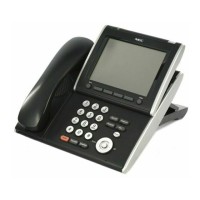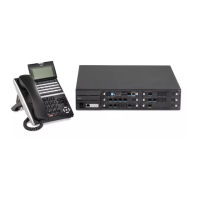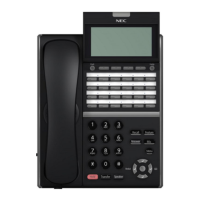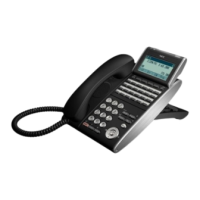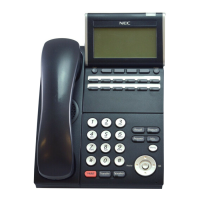54
Guide to Feature Programming
Incoming Call Trunk Setup
Assign the incoming trunk type for each trunk.
Incoming Type for Day/Night
Mode (1 ~ 8):
0 = Normal
1 = VRS (second dial tone if no
VRS installed)
2 = DISA
3 = DID
4 = DIL
5 = E&M Tie line
6 = Delayed VRS
7 = ANI/DNIS
8 = DID(DDI) Mode Switching
Incoming Extension Ring Group
Assignment
Assign extensions (up to 48) to Ring Groups.
Calls ring extensions according to Ring Group
programming. There are 100 available ring
groups.
Extensions 101
~ 108 (first eight
ports) ring for
incoming Ring
Group 1 calls.
No other
extensions ring
for incoming
Ring Group 1
calls.
Incoming Trunk Ring Group Assignment
Use this program to assign Normal Ring Trunks
(Program 22-02) to Incoming Ring Groups
(Program 22-04).
Trunks 1 ~ 400
Incoming Group Number for
Day/Night Mode (1 ~ 8):
0 = (No Setting)
001 ~ 100 = (Incoming Group)
102 = (In-Skin/ External Voice
Mail or InMail)
103 = (Centralized VM)
DIL Assignment
Assign the destination extension or Department
Group Pilot Number for each DIL Incoming
trunk.
For this selection to work, set Program
22-02-01 to 4 (DIL).
Day/Night Modes (1 ~ 8):
Extension Number (maximum of
eight digits)
Pilot Number
Operation
To answer calls using the Answer Key:
1.
Receive CO/PBX incoming ring.
2.
Press Answer.
3.
Talk with the CO/PBX incoming calling party.
4.
When additional CO incoming calls are received, press Answer to place the current call on hold
and connect the multiline terminal user to the next call.
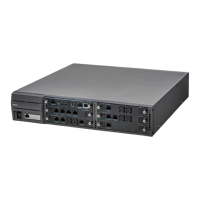
